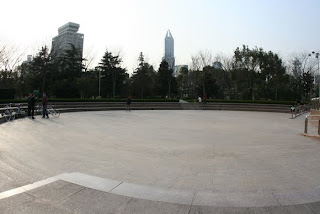This debate, which includes transport experts from around the nation, highlights both the challenges to increasing bicycling and walking in the US as well as some of the most popular--if sometimes ineffective--arguments used by advocates and opponents of walking and bicycling.
I've noticed a few broad themes:
1) Those less than pleased with LaHood's announcement argue that bicycles should pay for their road use. You will see pro-bike people arguing that the low-impact of bicycles combined with their public health savings more than outweigh the need to tax bicycles. According to the Alliance for Biking and Walking's latest benchmarking report, only 1.2% of federal funds are dedicated to bike/ped infrastructure.
I've noticed a few broad themes:
1) Those less than pleased with LaHood's announcement argue that bicycles should pay for their road use. You will see pro-bike people arguing that the low-impact of bicycles combined with their public health savings more than outweigh the need to tax bicycles. According to the Alliance for Biking and Walking's latest benchmarking report, only 1.2% of federal funds are dedicated to bike/ped infrastructure.
On a related note, Rep. Earl Blumenauer (D-OR) and other congresspeople--including Steve Cohen (D-TN), my representative in Memphis!--have introduced a new bill that would allow a pool of federal transportation money to be dedicated to funding projects that improve the ability of people to walk or bike. See the bill, which has been sent to committee, here.
2) Pro-bicycle people point out that half of all trips in the U.S. are within a 20 minute bike ride. That is, these trips are less than 2 miles. Those arguing against strong federal bicycle policy wield this same argument to contend that all bicycle policy should be local; that the federal government should fund highway projects while allowing states, counties and cities to focus on the development of urban bikeways.
3) In the U.S., as Andy Clarke points out, only 15% of transport trips are to and from work. Thus, for bike advocates, broadening the focus of encouragement to include efforts to increase bike use on those trips of less than two miles appears promising.
4) The health argument will become the most important argument in favor of increasing funding for bicycling and walking. Almost every bike advocate in the debate mentions the health argument, and it's an argument that reaches across the aisle. It's fiscally conservative and as American as Apple Pie.
5) Finally, traffic congestion is growing worse, a fact acknowledged by both bike advocates and highway transport advocates alike. But as Andy Clarke points out, congestion will only increase as more people move into cities. Increased biking and walking has been proven to mitigate congestion.











